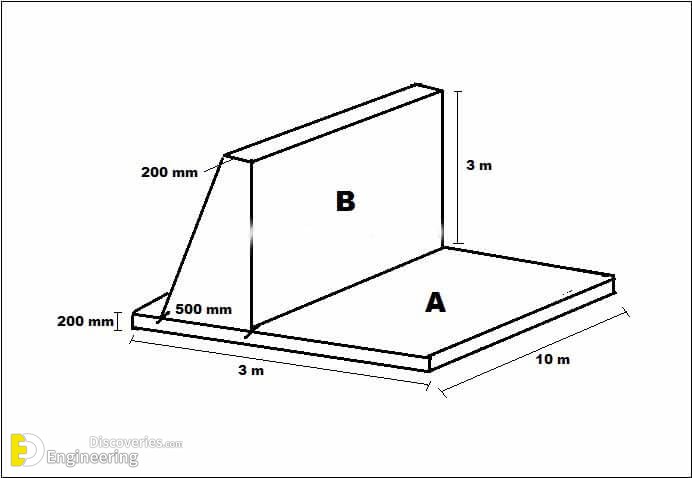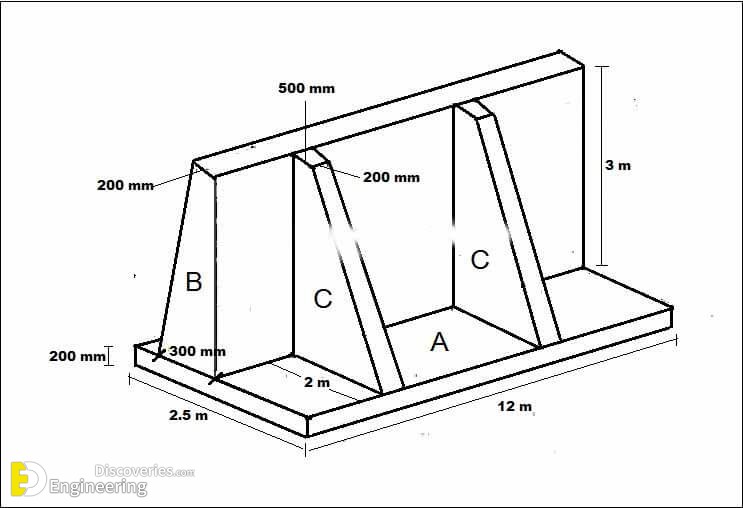Retaining wall is a masonry wall constructed to resist the pressure of the liquid, earth filling, sand or other granular material filled behind it.
Example 1
To calculate the volume of retaining wall we need to calculate the volume of retaining wall. Here I have divided the retaining wall into two parts, part A is the base slab and part B is the stem of retaining wall.
So Volume of retaining wall = Volume of base slab + Volume of the stem.
Volume of base slab = l x b x h = 10 x 3 x 0.2 = 6 m³
The stem is a trapezoid.
So Volume of stem = [{(a + b)/2} x h] x l
= [{(0.5 + 0.2)/2} x 3] x 10
= 21 m³
The total volume of retaining wall = 6 + 21 = 27 m³
So the volume of concrete for the retaining wall = 27 m³
Let’s take another example:
Example 2
Here I have divided the retaining wall into three parts, part A is the base slab, part B is the stem and part C is the counterfort of the retaining wall.
The volume of retaining wall = Volume of base slab + Volume of stem + Volume of counterfort
= Volume of A + Volume of B + Volume of C
Volume of A = l x b x h = 12 x 2.5 x 0.2 = 6 m³
Part B is a trapezooid.
So Volume of B = [{(a + b)/2} x h] x l = [{(0.2 + 0.3)/2} x 3] x 12
= 9 m³
As part C is also a trapezoid
So
Volume of C = [{(a + b)/2} x h] x l = [{(0.5 + 2)/2} x 3] x 0.2 = 0.75 m³
In the above retaining wall there is 2 counterfort so
Volume of C = 0.75 x 2 = 1.5 m³
The total volume of retaining wall = 6 + 9 + 1.5 = 16.5 m³.







